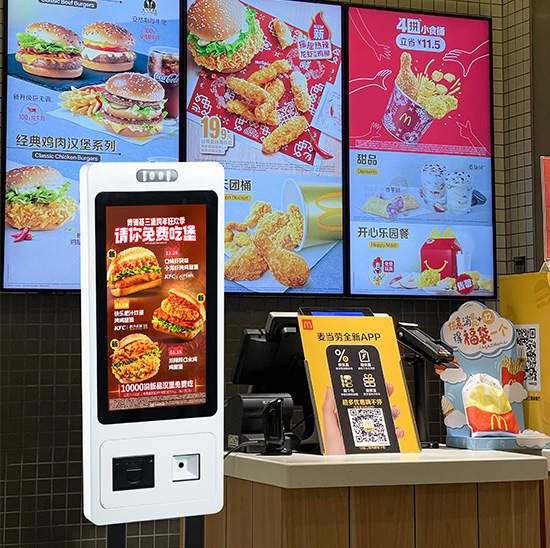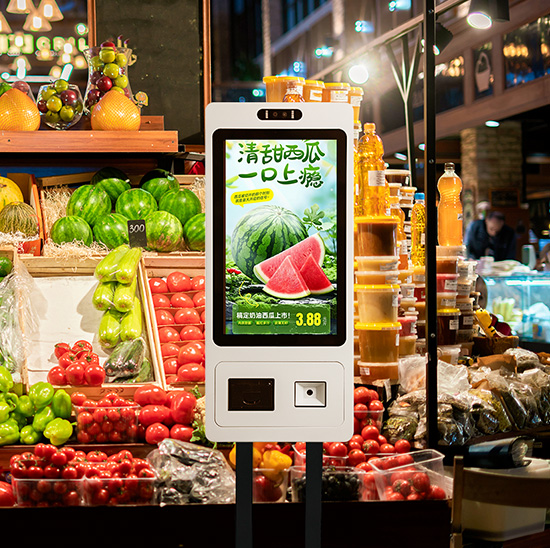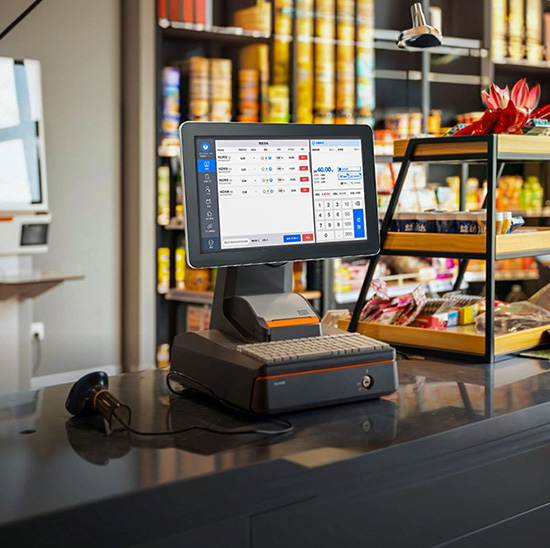Les écrans tactiles interactifs sont devenus un élément essentiel de la communication moderne, que ce soit dans les salles de classe, salles de réunion, paramètres de vente au détail, ou centres de commandement. Parmi toutes les tailles, le 65” l'écran tactile interactif offre l'équilibre idéal entre fonctionnalité, abordabilité, et impact visuel. Si vous envisagez d'investir dans un 2025, comprendre sa fourchette de prix et les facteurs qui l'influencent est crucial pour prendre une décision d'achat intelligente.
Ce guide vous aidera à explorer le prix moyen, ce qui l'affecte, coûts de possession cachés, et comment obtenir la meilleure offre, avec des informations du point de vue du fabricant.
Pourquoi 65” Les écrans tactiles interactifs sont populaires dans 2025

L'écran tactile de 65 pouces est rapidement devenu le choix incontournable pour les environnements éducatifs et professionnels. Sa popularité découle de plusieurs avantages pratiques:
- Idéal pour les pièces de taille moyenne: Qu'il s'agisse d'une salle de classe ou d'une salle de réunion de taille moyenne, un 65” l'écran plat offre une excellente visibilité sans encombrer l'espace.
- Bilan coût-performance: Il offre une expérience interactive complète : multi-touch, 4Résolution K, Système d'exploitation intégré : à un prix plus accessible que celui des écrans plus grands.
- Intégration standardisée: De nombreux intégrateurs audiovisuels et équipes informatiques considèrent 65” un « point idéal » pour la compatibilité avec les systèmes de montage, écosystèmes logiciels, et infrastructures réseau.
En collaboration à distance, apprentissage hybride, et l'affichage numérique continue de croître, le 65” le panneau interactif devrait rester l’un des formats les plus vendus en 2025.
Moyenne 65” Gamme de prix des écrans tactiles interactifs en 2025

Le prix d'un 65” écran tactile interactif dans 2025 se divise généralement en trois catégories en fonction des fonctionnalités, positionnement de la marque, et scénarios d'application:
Niveau d'entrée: $900 - $1,400
Ces modèles sont conçus pour une utilisation de base dans les salles de classe ou de formation. Ils comportent souvent des panneaux FHD ou 4K standard, Technologie tactile IR, et fonctionne sur le système d'exploitation Android avec des outils intégrés limités.
Milieu de gamme: $1,500 - $2,500
Ce niveau répond à la plupart des besoins des entreprises et des institutions. Il inclut généralement une meilleure qualité d’affichage, précision accrue du point de contact, connectivité plus forte (par exemple., plusieurs ports HDMI/USB-C), et une intégration système plus robuste.
Haut de gamme: $2,600 - $4,000+
Les modèles haut de gamme sont souvent dotés d'une technologie de liaison capacitive ou optique, 4K écrans haute luminosité, caméras et microphones intégrés, double système d'exploitation (Android + Système d'exploitation Windows), et outils de collaboration basés sur l'IA.
Facteurs clés qui influencent le prix de l’écran tactile interactif

Le prix d'un 65” écran tactile interactif est déterminé par une combinaison de spécifications techniques, qualité de fabrication, écosystème logiciel, et la dynamique du marché. Comprendre ces facteurs aide les acheteurs à évaluer la vraie valeur d'un produit, et pas seulement le chiffre figurant sur l'étiquette de prix..
1. Technologie tactile
La technologie tactile joue un rôle fondamental dans la détermination du prix et de l'expérience utilisateur d'un écran interactif.
- Infrarouge (ET) touche est l’option la plus courante et la plus rentable, offrant des performances fiables mais une précision inférieure et une réponse plus lente dans certaines conditions.
- Tactile capacitif, similaire aux écrans de smartphones, prend en charge une reconnaissance tactile plus précise, réponse gestuelle plus rapide, et une écriture plus fluide, mais cela augmente considérablement le coût.
2. Résolution d'écran
La résolution d’affichage est un autre élément essentiel affectant le prix.
- HD complet (1920×1080) se trouve généralement dans les modèles d'entrée de gamme et peut convenir à une utilisation de base comme l'enseignement ou l'annotation légère.
- 4K UHD (3840×2160) est devenu la norme pour les modèles milieu de gamme et premium, offrant une clarté supérieure, acuité, et le détail, essentiel pour les présentations professionnelles, travail de conception, et lisibilité dans les grandes pièces.
3. Matériel intégré & Logiciel
L'inclusion d'Android intégré ou d'un double système d'exploitation (Android + Système d'exploitation Windows) affecte considérablement les prix. Unités avec processeurs avancés, RAM, et le stockage sont plus performants mais aussi plus chers. Logiciel de collaboration préinstallé, outils de tableau blanc, ou les plateformes éducatives sous licence peuvent encore augmenter le prix de base.
4. Qualité de construction & Attestation
Matériaux de qualité commerciale, tels que les cadres en aluminium et le verre trempé incassable, impact sur la durabilité et le prix. Produits avec CE, FCC, ou les certifications ISO ont tendance à exiger des prix plus élevés, en particulier lorsqu'il est utilisé dans les écoles, hôpitaux, ou appels d'offres gouvernementaux où la conformité est essentielle.
5. Réputation de la marque & Services d'assistance
Les marques connues proposent souvent des prix plus élevés en raison de l'infrastructure de service, assistance garantie, et mises à jour logicielles à long terme. Les modèles OEM ou moins connus peuvent être plus rentables, mais il se peut qu'il ne dispose pas du même niveau de support technique ou de couverture de services régionaux.
2025 Aperçu du marché: Populaire 65” Modèles d'affichage interactifs et fourchettes de prix
| Marque / Modèle | Résolution | Technicienne | Type de système d'exploitation | Gamme de prix (USD) |
| Touche(Marque blanche OEM) | FHD / 4K UHD | ET / Capacitif | Android / Double système d'exploitation | $400 - $1,500 (Quantité minimale de commande OEM) |
| ViewSonic IFP6550 | 4K UHD | ET | Android + Emplacement OPS | $1,800 - $2,500 |
| Carte SMART MX065-V3 | 4K UHD | Hybride (ET + OutilSense) | Android + QI | $2,800 - $4,200 |
| ActivPanel Promethean 9 | 4K UHD | Technologie Vellum™ | Android | $2,500 - $3,800 |
| Nouvelle ligne Q série Q65 | 4K UHD | ET | Android + les fenêtres | $2,000 - $3,000 |
| Série BenQ RP03 | 4K UHD | IR avec résistance aux germes | Android + Système d'exploitation Windows | $2,300 - $3,500 |
Remarque importante: Les fourchettes de prix ci-dessus sont basées sur les prix du marché cotés en bourse et sont uniquement représentatives.. Les coûts réels peuvent varier en fonction des canaux de distribution, disponibilité des stocks, événements promotionnels, et politiques tarifaires régionales. Pour des devis précis, il est recommandé de contacter les fournisseurs directement pour une tarification en temps réel.
Coût total de possession: Au-delà du prix de l'écran

Les étiquettes de prix ne racontent pas toujours toute l’histoire. Voici quelques coûts souvent négligés qui peuvent affecter considérablement votre investissement:
- Installation: Kits de montage mural, supports de sol, et une configuration professionnelle peut ajouter 100 $ à 300 $.
- Licence de logiciel: Certaines marques nécessitent des abonnements annuels pour les fonctionnalités clés.
- Entretien & garantie: Les garanties de base sont de 1 à 2 ans; une couverture étendue ou des plans de service sur site ont un coût.
- Expédition & impôts: Les acheteurs internationaux doivent prendre en compte les droits de douane, T.V.A., et frais de transport.
Lors de l'évaluation des offres, considérer le coût total de possession (Coût total de possession) sur 3 à 5 ans, pas seulement le coût initial du matériel.
Conseils pour obtenir le meilleur 65” Offre d'écran tactile interactif en 2025
Vous cherchez à économiser tout en maximisant la valeur? Voici quelques stratégies pratiques:
- Achetez en gros ou via des OEM: Si vous équipez une école ou plusieurs bureaux, la tarification basée sur la quantité peut réduire considérablement les coûts unitaires.
- Négocier des offres groupées de logiciels: De nombreux fournisseurs peuvent inclure des outils de collaboration ou des logiciels de gestion à distance comme valeur ajoutée.
- Magasinez autour des saisons clés: Les promotions apparaissent souvent à la rentrée (T3) ou fin d'exercice (T4) cycles.
- Évitez de payer trop cher pour votre image de marque: Un modèle sans logo ou OEM avec des performances égales peut vous faire économiser 30 à 50 % sans sacrifier la qualité..
- Assurer la disponibilité du service local: Un écran moins cher sans assistance locale peut coûter plus cher en temps d'arrêt et en remplacements ultérieurs.
Comment nous aidons: Solutions d'écran tactile OEM qui maximisent votre retour sur investissement
En tant que professionnel fabricant d'écrans tactiles interactifs, nous sommes spécialisés dans l'aide aux entreprises mondiales, écoles, et les intégrateurs tirent davantage de chaque dollar investi.
Voici ce que nous proposons:
✅ Tarification directe en usine avec MOQ flexible – idéal pour les distributeurs ou les déploiements pilotes
✅ Personnalisation OEM/ODM y compris le logo, Interface utilisateur, ports, et spécifications du panneau
✅ Composants à longue durée de vie (50,000h+) et matériaux de qualité industrielle
✅ Compatibilité double système (Android + Système d'exploitation Windows) pour un déploiement polyvalent
✅ Contrôle qualité strict & attestations (CE, CCC, ISO 9001) pour la tranquillité d'esprit
✅ Délais de livraison rapides et un support après-vente réactif dans toutes les régions
Que vous recherchiez une solution en marque blanche ou un produit sur mesure adapté à votre application, nous sommes prêts à accompagner votre projet de la conception à la livraison.



